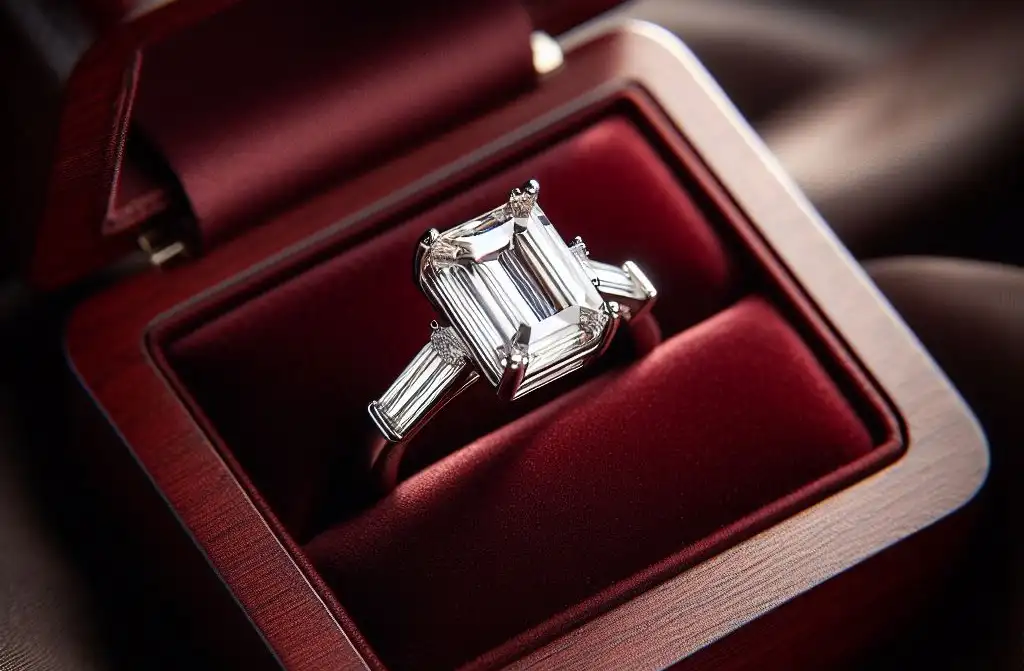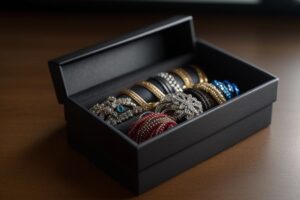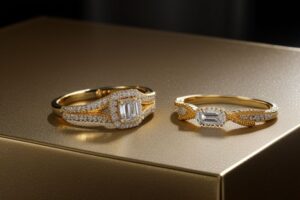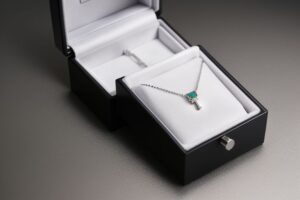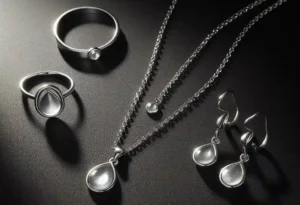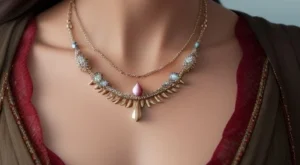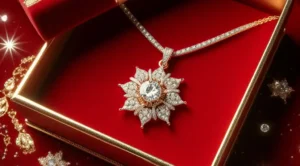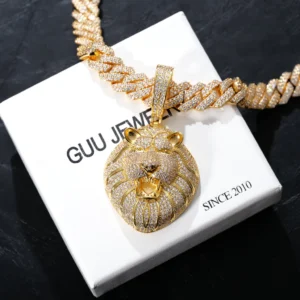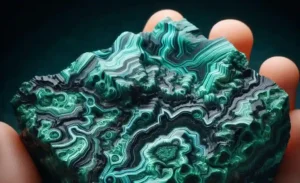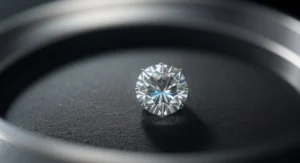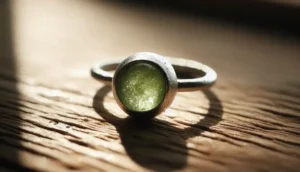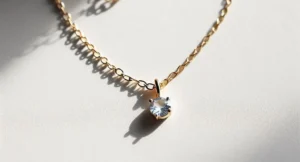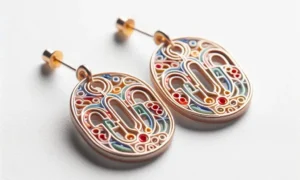Are Baguette Diamonds Real? In the glittering world of gemstones and jewelry, diamonds have long held a position of allure and prestige, symbolizing both beauty and strength.
Among the myriad of diamond cuts, the baguette diamond, with its unique shape and brilliance, has caught the eyes of many. But as with any precious gem, questions about authenticity arise: Are baguette diamonds real?
This comprehensive guide aims to delve into the heart of this question, providing insights into the authenticity, characteristics, and care of baguette diamonds.
Are Baguette Diamonds Real?

Yes, baguette diamonds are indeed real diamonds. They are not a different type of gemstone but rather a specific cut of diamond characterized by their rectangular shape and step-cut facets.
The term “baguette” refers to this unique cut and not to the diamond’s authenticity or natural origin. Like all diamonds, baguettes can be either naturally mined from the earth or synthetically created in a lab.
Both types possess the same chemical, physical, and optical properties as their round or differently shaped counterparts, making them genuine diamonds. The distinction lies in their cutting style, which gives baguette diamonds their distinctive appearance.
Whether natural or lab-grown, baguette diamonds hold the same allure and value attributed to their rarity, beauty, and the craftsmanship required to shape them.
Understanding Baguette Diamonds: A Brief Overview
Baguette diamonds stand out in the world of gemstones due to their distinctive step-cut and elongated rectangular form. This cut, which owes its name to its resemblance to the French loaf of bread, was introduced during the early 20th century and quickly garnered appreciation for its sleek, linear look that diverges from the traditional round cuts.
Unlike round brilliant cuts that are designed to maximize sparkle, the baguette cut offers a more understated elegance, emphasizing clarity and crisp lines. These diamonds are typically less fiery but display a unique beauty through their simplicity and clean angles, making them excellent choices for those who favor a more contemporary or minimalist aesthetic.
Their design lends itself well to being used as accent stones, where they can be set alongside other diamonds to complement and enhance the overall appearance of a piece of jewelry. Their straight edges allow for seamless arrangements with no gaps, which is particularly appealing in settings like wedding bands and eternity rings.
Moreover, due to their shape and cutting style, baguette diamonds can give the illusion of greater size and length, contributing to a more dramatic effect in the jewelry they adorn.
Understanding the unique appeal of baguette diamonds involves appreciating their role in modern jewelry design. They are cherished not only for their individual beauty but also for how they interact with other stones and settings to create pieces that are simultaneously timeless and of the moment. Their distinct charm lies in the combination of geometric precision and the elegant simplicity of their lines, embodying a modern sophistication that enhances any piece they grace.
The Characteristics of Genuine Baguette Diamonds
The allure of genuine baguette diamonds is underscored by their distinct characteristics, which distinguish them within the diverse world of gemstones. One of the most defining features is their clarity, a critical aspect given their step-cut facet design that naturally emphasizes transparency over brilliance.
High-quality baguette diamonds showcase a minimal presence of inclusions, making them appear almost pristine and enhancing their visual appeal. The precision with which these diamonds are cut also plays an indispensable role in their overall beauty and value.
Each facet must be meticulously aligned and symmetrical, a testament to the skill of the diamond cutter, to optimize the stone’s reflective qualities and ensure a clean, elegant appearance.
The shape of baguette diamonds, long and rectangular, contributes to their unique charm. This geometric precision demands a high level of craftsmanship to achieve the desired effect of understated elegance and modern sophistication.
When evaluating genuine baguette diamonds, it is also essential to consider their color, which can range from colorless to slight tones. The closer to colorless, the more desirable and valuable the diamond is considered to be.
Understanding these characteristics is vital for appreciators of baguette diamonds, as it allows for an informed appreciation of their minimalist beauty and the technical expertise required to bring them to life. Each genuine baguette diamond is a masterpiece of nature and craftsmanship, embodying a blend of artistry, science, and the inherent allure of diamonds.
Synthetic vs. Natural Baguette Diamonds: How to Tell the Difference
Distinguishing between synthetic and natural baguette diamonds can present a challenge given their identical properties.
However, certain subtle differences can serve as indicators. For starters, lab-created diamonds might exhibit unique fluorescence patterns when subjected to UV light, a feature less commonly found in their natural counterparts. Advanced spectroscopy techniques can reveal these patterns, though such equipment is typically only accessible to gemological professionals.
Another distinctive aspect is the type of inclusions present within the diamond. Synthetic versions tend to have inclusions that differ in appearance from those found in natural stones, such as distinct metallic inclusions or patterns resulting from their creation process.
It’s also noteworthy that natural diamonds, formed over billions of years under the earth’s surface, often carry with them a history that includes specific geological inclusions, which are rarely replicated in synthetic diamonds. The growth conditions in a lab setting are controlled and do not mirror the natural formation process, leading to differences at the microscopic level.
Ultimately, the most reliable method to determine the origin of a baguette diamond is through a certification report from a reputable gemological lab. These reports meticulously detail the diamond’s characteristics, including its origin, ensuring buyers can make informed decisions based on concrete data.
Without such expert analysis, it remains difficult for non-specialists to distinguish between synthetic and natural baguette diamonds based solely on visual inspection or basic testing methods.
The Role of Certifications in Authenticating Baguette Diamonds
The authentication of baguette diamonds through certifications cannot be overstated in its importance. Esteemed organizations such as the Gemological Institute of America (GIA) and the International Gemological Institute (IGI) provide impartial, third-party evaluations of diamonds, issuing detailed reports that assess a diamond’s four Cs: cut, color, clarity, and carat weight.
These reports are pivotal in determining a baguette diamond’s genuineness and overall quality. Beyond the basic parameters, certifications often include additional analyses, such as symmetry, polish, and fluorescence, which further aid in understanding a diamond’s characteristics.
For buyers, a certification means assurance; it’s proof that the gem in question has undergone a rigorous examination by experts equipped with advanced tools, ensuring that it meets the high standards expected of genuine diamonds.
This process also includes verification of a diamond’s natural or synthetic origin, providing a clear distinction that can influence a buyer’s decision. Given the sophistication in creating lab-grown diamonds, which possess qualities indistinguishable to the naked eye from those mined from the earth, certifications have become indispensable.
They not only affirm a diamond’s authenticity but also contribute to transparency in the diamond market, allowing consumers to make informed choices about what they are purchasing. For anyone considering a baguette diamond, seeking out this certification is a crucial step in ensuring the stone’s authenticity, providing a level of confidence that mere visual inspection cannot.
Thus, investing in a certified baguette diamond is investing in peace of mind, knowing that the beauty you admire is backed by the highest standards of verification in the gemological world.
Caring for Your Baguette Diamonds to Ensure Longevity
Maintaining the brilliance and condition of your baguette diamonds involves simple yet crucial practices. These gems require gentle attention to keep them dazzling for years to come. Initiating a routine cleaning process can make a significant difference in their appearance.
Utilize a solution of warm water and a drop of mild dish soap, gently agitating the diamond with a soft-bristled brush. This method is effective in removing everyday grime and maintaining the diamond’s sparkle without risking damage to the stone or the setting.
Rinsing thoroughly under clean water and drying with a lint-free cloth completes this basic yet essential care step. Additionally, periodic professional inspections by a skilled jeweler can identify and preempt potential issues, such as loose settings or signs of wear, that could compromise the diamond’s security or diminish its aesthetic appeal.
Moreover, while baguette diamonds are celebrated for their hardness, they are not impervious to harm. It’s advisable to remove diamond jewelry during activities that could expose it to abrasive substances or hard knocks, which could mar its surface or lead to chips.
Also, when not being worn, store your baguette diamond jewelry in a fabric-lined jewelry box or a pouch with compartments designed to prevent pieces from scratching each other. Implementing these steps as part of your regular jewelry care regimen will preserve the physical integrity of your baguette diamonds and ensure that their elegant beauty continues to shine through, embodying sophistication and grace for generations.
The Importance of Provenance in Baguette Diamond Authenticity
The significance of understanding the provenance of baguette diamonds extends far beyond mere curiosity. It directly impacts the authenticity and ethical value of the stone, aligning with a growing consumer demand for transparency and responsibility in the jewelry industry.
The origin story of each diamond, including where it was mined and the conditions under which it was extracted, contributes to its overall appeal and worth.
Ethical sourcing has become a cornerstone of the modern gemstone market, with buyers increasingly seeking assurances that their purchases do not finance conflict or contribute to human rights abuses.
Provenance information serves as a crucial indicator of a diamond’s legitimacy, offering buyers peace of mind that their investment is not only genuine but also morally sound.
This concern for ethical procurement has led to the establishment of several international certifications and agreements, such as the Kimberley Process, designed to prevent “blood diamonds” from entering the mainstream diamond market.
Inquiring about the provenance of a baguette diamond is a responsible step that not only ensures the diamond’s authenticity but also supports ethical mining practices. It is a testament to the buyer’s commitment to making conscientious choices in the world of luxury goods.
As the industry moves towards greater transparency and accountability, the story of where and how a diamond was sourced becomes an integral part of its allure, adding depth and meaning to the beauty it radiates. Thus, the provenance of baguette diamonds is not just a detail but a significant aspect that enriches the narrative of each piece, making it truly extraordinary.
Expert Tips for Purchasing Genuine Baguette Diamonds
Navigating the purchase of genuine baguette diamonds can seem daunting, but with careful consideration and informed decision-making, you can acquire a stunning piece that meets both your aesthetic and ethical standards. To assist in this endeavor, follow these targeted guidelines developed by gemological experts:
– Prioritize purchases from well-established jewelers or distributors with a strong reputation for quality and integrity. These entities are more likely to provide detailed documentation and certification for their diamonds, reflecting their commitment to authenticity and customer satisfaction.
– Request a comprehensive grading report from a reputable gemological laboratory, such as the GIA or IGI. This document should detail the diamond’s characteristics, including its cut, color, clarity, and carat weight, offering concrete evidence of its quality.
– Utilize a jeweler’s loupe or microscope to examine the diamond closely. This allows you to personally assess the gem’s clarity, look for any distinctive inclusions, and appreciate the precision of its cut, which are hallmarks of a genuine baguette diamond.
– Inquire specifically about the diamond’s origin. Ethically sourced diamonds are not only more appealing from a moral standpoint but also assure you that your purchase supports sustainable and humane mining practices.
– Assess the craftsmanship of the entire piece of jewelry, as high-quality settings and attention to detail in the design further validate the authenticity and value of the baguette diamond it houses.
By adhering to these expert recommendations, you will enhance your ability to select a genuine baguette diamond that aligns with your desires for beauty, quality, and ethical responsibility.

